-
Contributing Member


200,000 cartridge cases and a few other bits
Hi all
A good friend of mine, and landowner of a farm that straddles an old WW2 airbase, alerted me to an incredible discovery, and kindly asked if I’d like to come along and see ‘if anything was of any use’. I duly turned up and discovered that an old WW2 dump pit had been found, in which were a very large number of bomb fuzes. On closer examination, the pit was 4 to 5 feet in diameter, roughly circular, and had obviously been dug by hand. At the bottom of the pit was a layer of cartridge cases, (we will come to those shortly!), then a layer of molten metal, (mainly zinc), then some badly fire damaged bomb fuzes, then at the top of the layer, some not so badly damaged bomb fuzes. In the molten metal layer and sitting on top of it were quite a few incendiary bomb tile breakers and the remains of various other bits of fully burnt out ordnance.
What appears to have happened is that, sometime after the end of the war, 4 or 5 junior servicemen, (officers or old salts aren’t going to do it!), were sent out into the middle of the field to dig a pit. Everything was layered in the pit and the combustible material ignited. Once the flames were out, the pit was filled up and forgotten about. Until now!
The quantity of bomb fuzes was, in itself, astonishing. The fire had ensured that none had any of their small ‘magazines’ intact so they were fully inert and devoid of any explosive material.
However, the cartridge layer was even more astonishing.
The water table was quite high in the field, and just below the layer of molten metal, the cartridge cases were sitting in their own little pond. The molten metal had prevented any soil getting to the layer so it was basically a huge pile of cartridge cases in water. I did a bit of hand digging to try and determine how far down the layer went. I got my hand into the cartridge case layer up to my elbow and it WAS STILL GOING! Incredible.
We spent a few hours recovering as many cartridge cases as we could, but hardly seemed to be denting the pile. At one point we even found a seam of around 300 Lee-Enfield charger clips!
The cartridge cases were mainly 303s with quite a few 9mms thrown in for good measure, and the odd one or two 45cal ACP. As it was an old RAF base, it was assumed the 303s came from the bombers after a mission, but some of the 303s had Bren firing pin marks, and this theory wouldn’t support the presence of the charger clips or the 9mm or the 45s. So we finally decided that these cartridge cases had come from the small arms range, not that far away from the pit itself. At the end of the war, the RAF were doing a grand clear-up and just buried the lot beneath a pile of bomb fuzes, and set the whole lot alight. It was an incredible dig!
A couple of cartridge cases.....

Another shot after the dig and sorting. I had recovered around 15,000 cartridge cases and a huge number of bomb fuzes and parts, all completely devoid of any explosive material due to the fire.
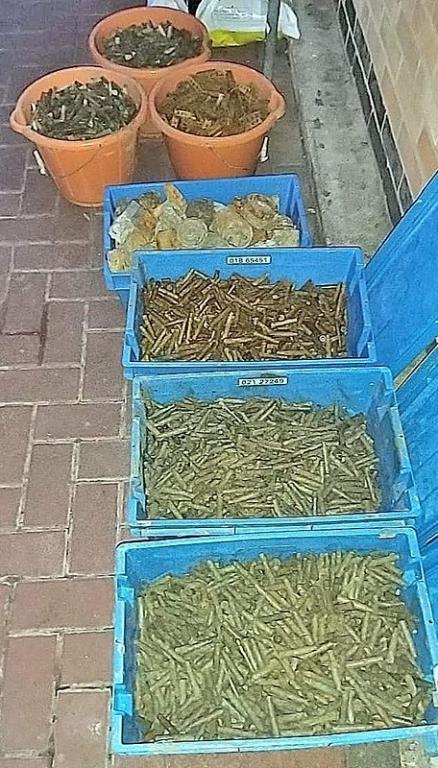
Some of the bomb fuzes. Mainly No. 848, with lots of arming columns and arming vanes from the No. 848, as well as a few No. 860 fuzes and even a couple of No. 849.
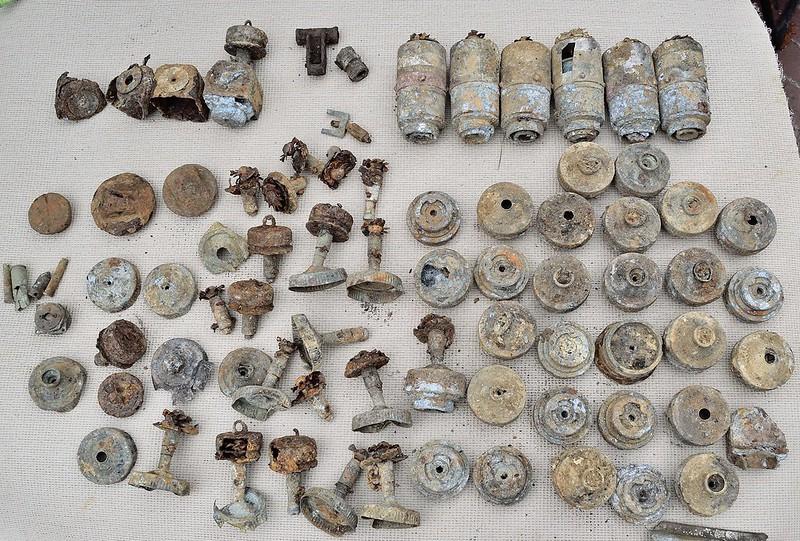
After a bit of a clean....
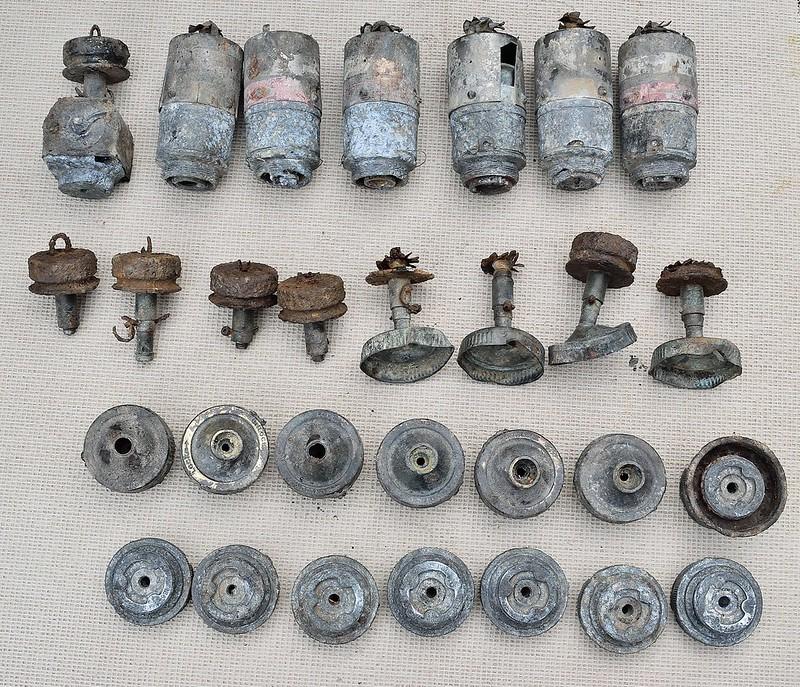
The 303s cleaned up really easily, although I only took a few back to this condition, preferring to retain the patina on the vast majority.
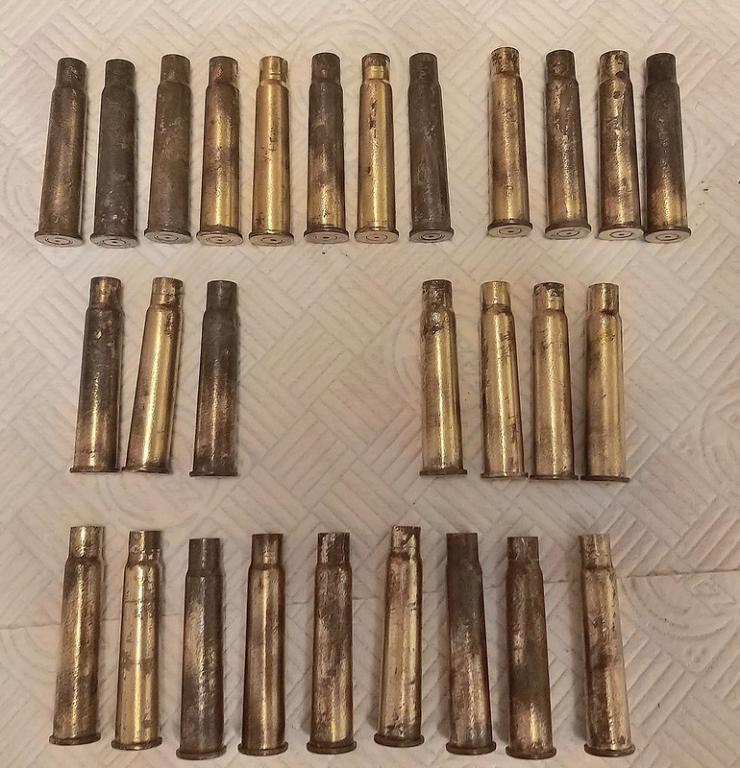
Example of a few of the headstamps on the 303s.....
After a while it became obvious the cartridges had come from all corners of the globe, with examples from Canada , Australia
, Australia , India, US, Argentina
, India, US, Argentina as well as numerous British factories.
as well as numerous British factories.
GB Greenwood and Batley, Leeds, UNITED KINGDOM
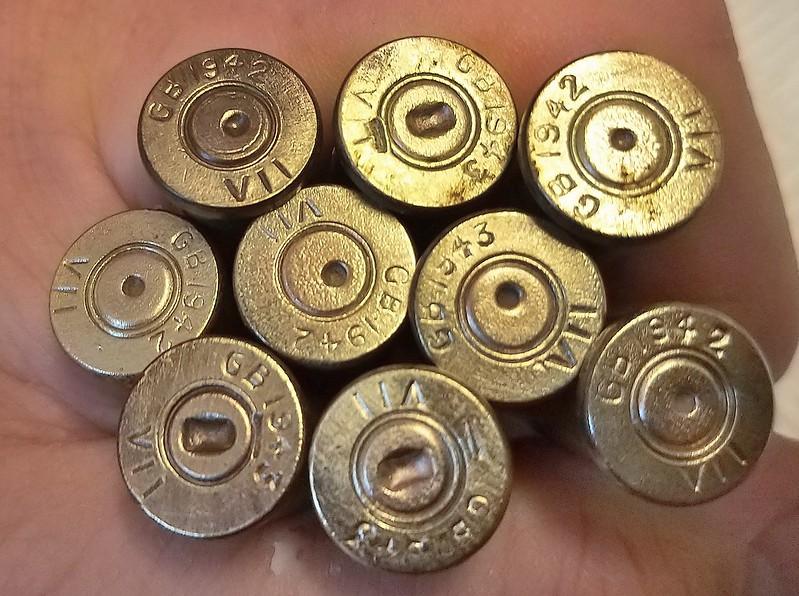
MF Small Arms Ammunition Factory No 1, Footscray, Melbourne, AUSTRALIA
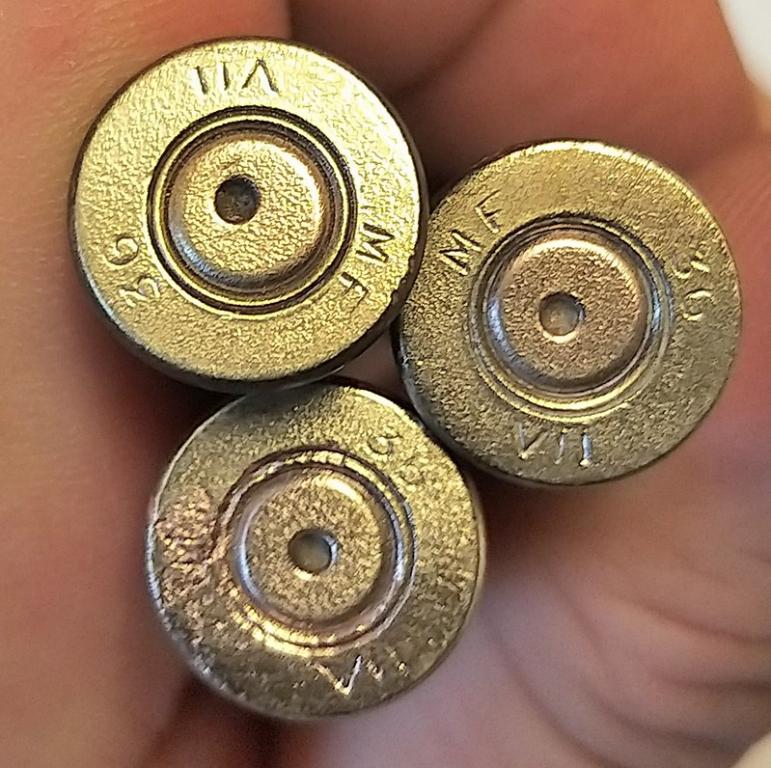
RG Royal Ordinance Factory, Radway Green, Cheshire, UNITED KINGDOM
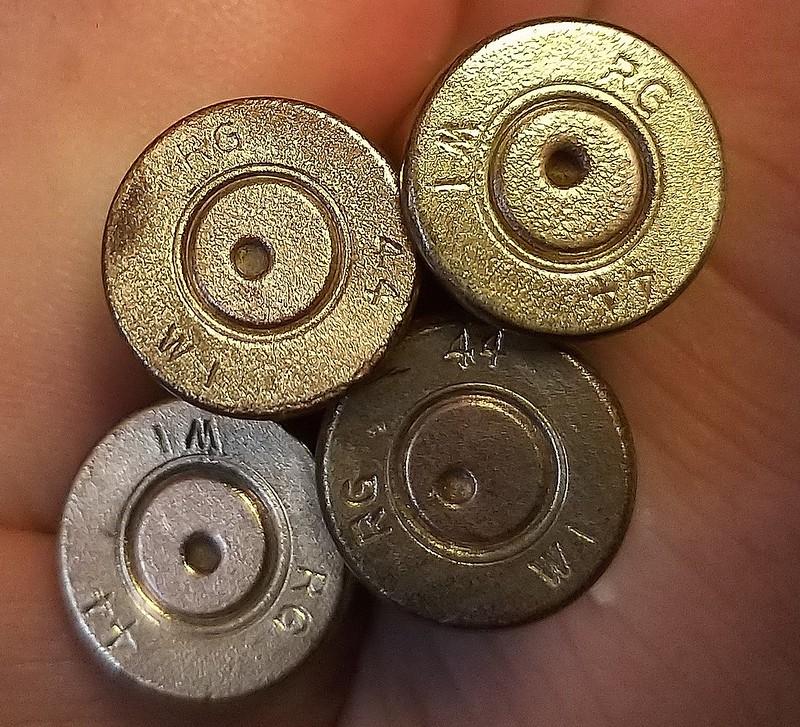
CP Crompton Parkinson Ltd., Guiseley, Yorkshire, UNITED KINGDOM
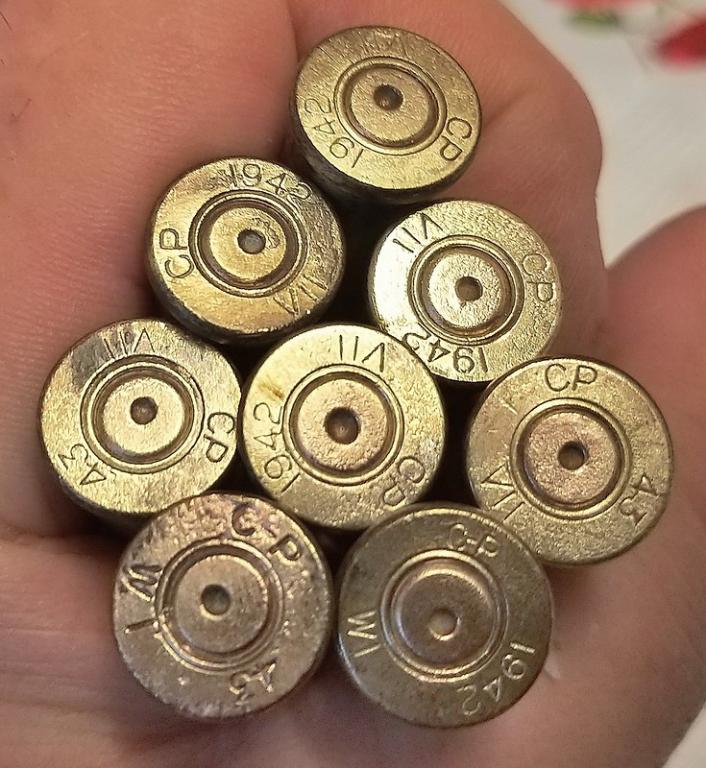
K Kynoch & Co., Witton, Birmingham, UNITED KINGDOM
K2 Imperial Chemical Industries Kynoch Factory at Standish UNITED KINGDOM
K5 Imperial Chemical Industries Kynoch Factory at Kidderminster UNITED KINGDOM
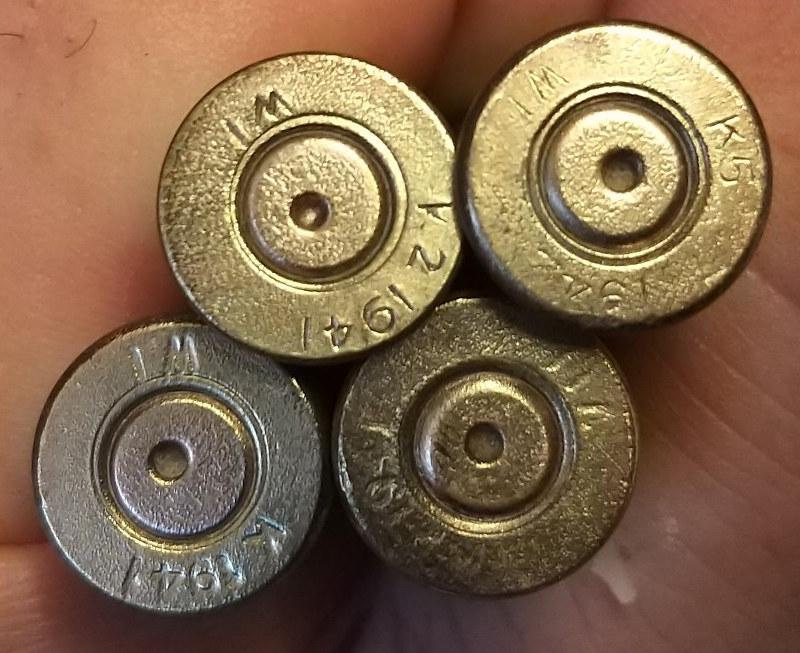
Quite a few charger clips, all in remarkable condition given how long they had been buried. There were 3 different types, including a few of the early WW1 types.
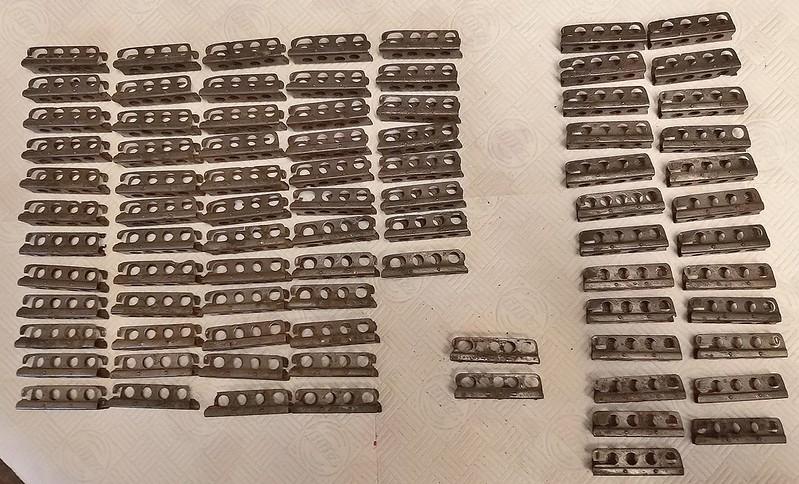
Condition was so good, they just had to be loaded up!
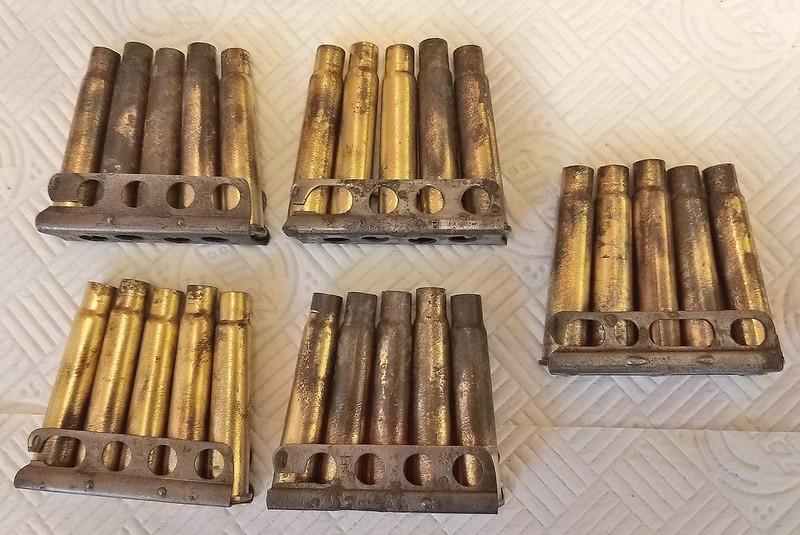
In among the 303s were some other cartridge cases. Of note were the 303 grenade launcher 'blanks' that had obviously gone into the pit live as they had all cooked off.
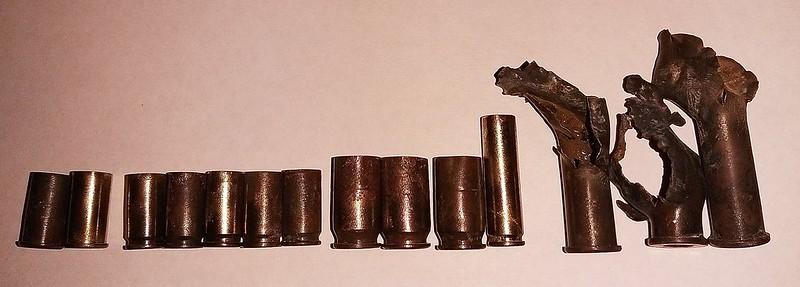
.380 cartridge cases.
ORBEA Cartucheria Orbea Argentina, Argentina
RL Royal Laboratory, Woolwich, England
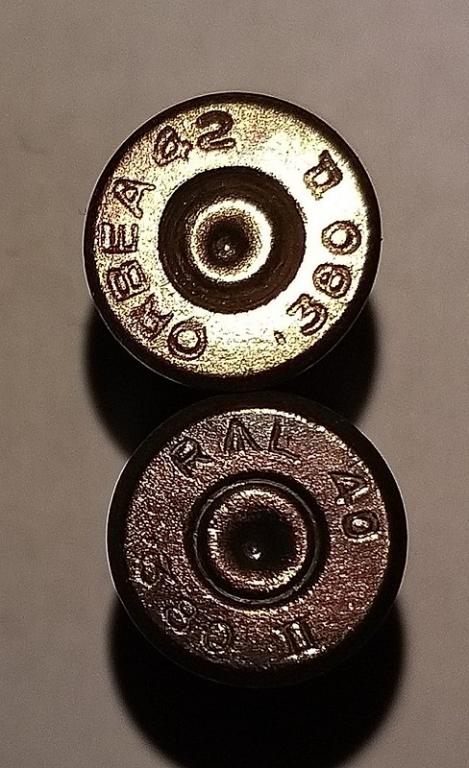
9mm cartridge cases
BE Royal Ordnance Factory, Blackpole, UK
HN Royal Ordnance Factory, Hirwaun, UK
WRA Winchester Repeating Arms Co., Bridgeport, CT
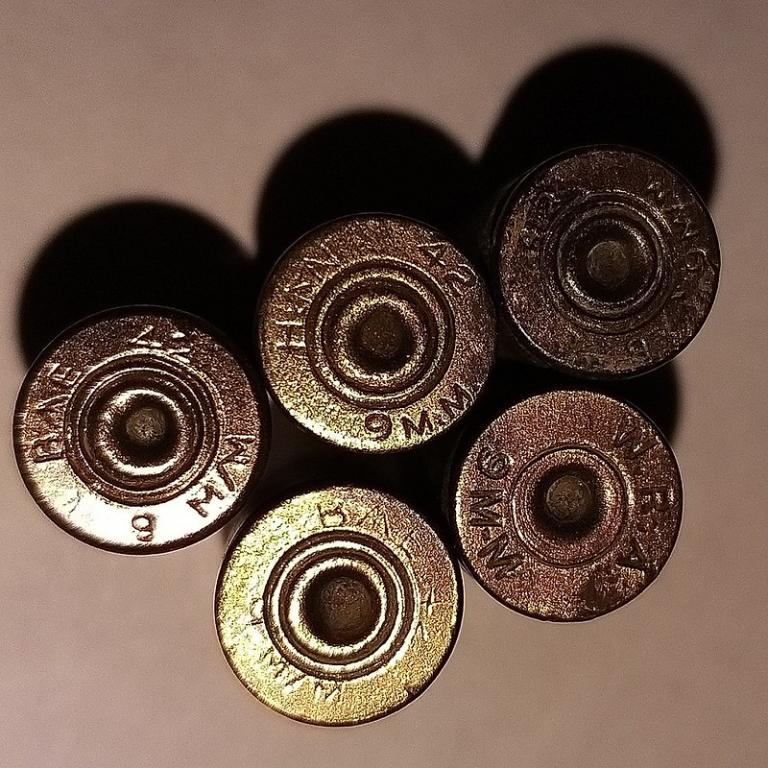
.45 ACP
WRA Winchester Repeating Arms Co., Bridgeport, CT
REM-UMC Remington Arms Co., Bridgeport, CT
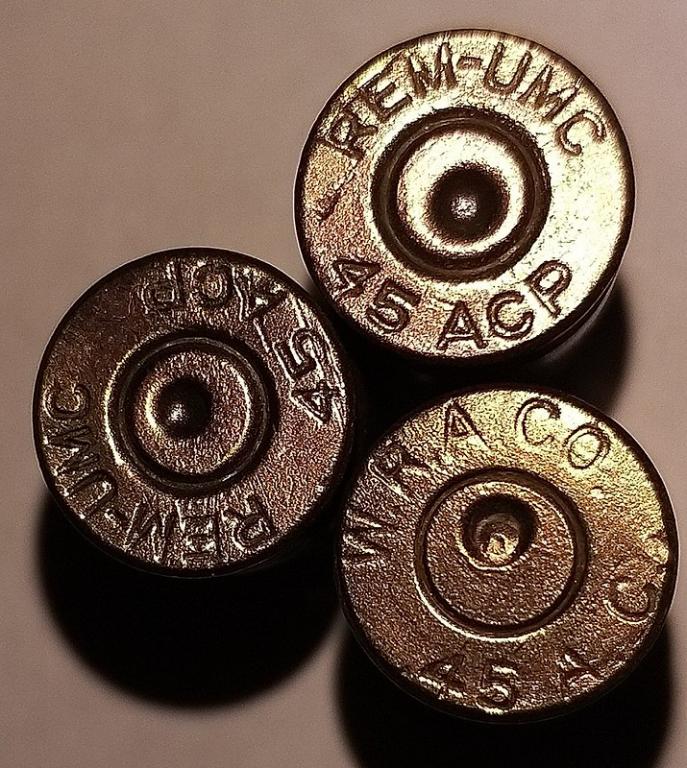
.30 cal M1 carbine
carbine
PC Peters Cartridge Company, Cincinnati, OH
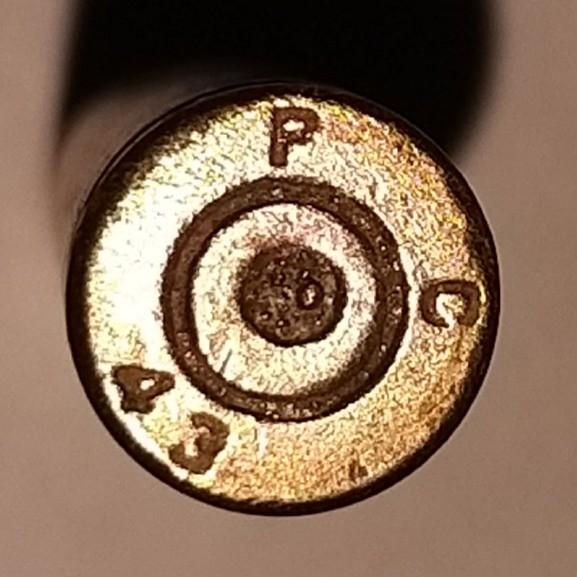
All the grenade discharger blanks had the same headstamps
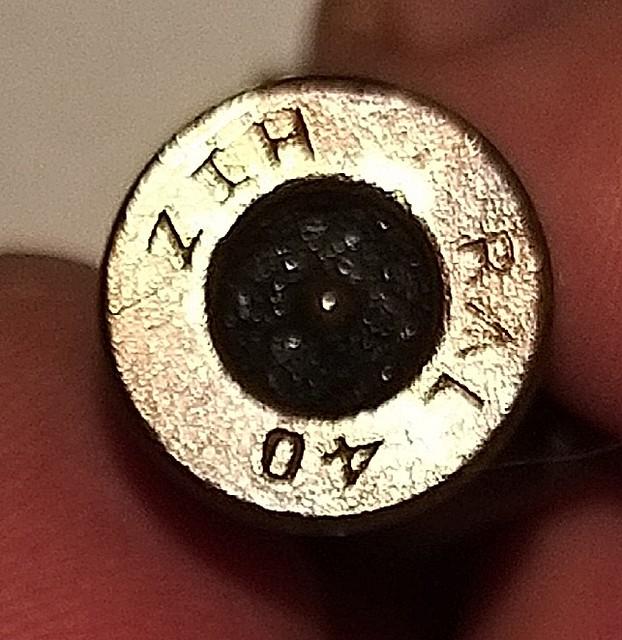
It was quite a while before I noticed some of the .45cal cartridge cases I had were very slightly different. I soon realised I had something much rarer....... Webley automatic pistol .455 cartridge cases! The headstamps gave them away.....

Finally, a couple of tile breakers from the incendiary bombs used to set the fire that 'destroyed' the bomb fuzes.
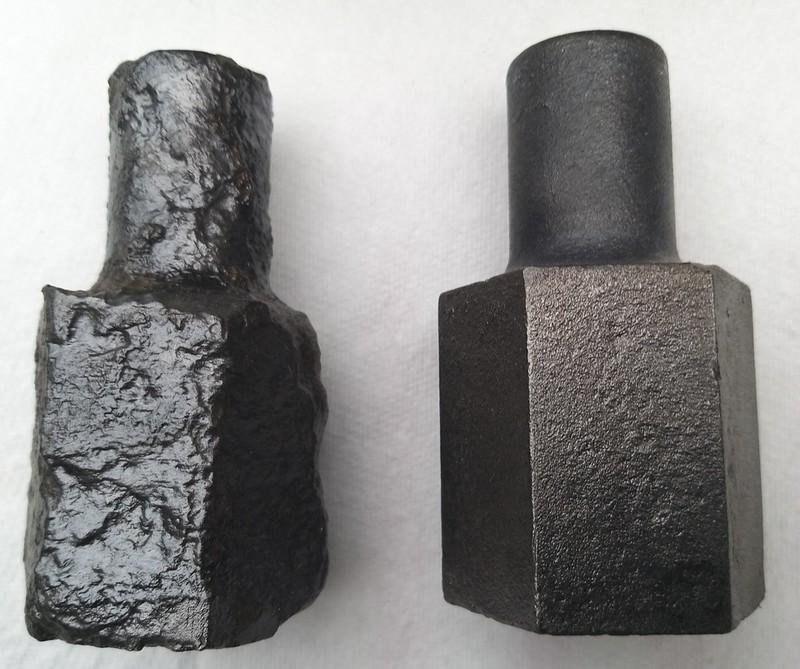
Not a bad dig......
RRPG
Information
 |
Warning: This is a relatively older thread
This discussion is older than 360 days. Some information contained in it may no longer be current. |
|
-
The Following 5 Members Say Thank You to RRPG For This Useful Post:
-
02-29-2020 01:18 PM
# ADS
Friends and Sponsors

-
Legacy Member

nice find! now what will you do with all that? 
-
-
-
Legacy Member

-
-
Contributing Member



Originally Posted by
Merle

nice find! now what will you do with all that?

I have already donated a large amount to re-renactor groups and have the rest for use when I display at military shows and schools etcc.... I will also make up 3 or 4 250 round belts when I get the chance!

Originally Posted by
Steve762

Donate some to the Imperial War Museum? In a perfect world every history teacher in the
UK
would have a few cases to show the kids. "These things were used by brave boys" to keep you free! But, that is just my take and I know it would not be PC.
The Imperial war museum will just put them all in a box in the basement. They would never see the light of day. I will continue to display them at military shows and schools, and donate to re-enactor groups. I, like you, think that all history departments should have something to show the children!
-
The Following 4 Members Say Thank You to RRPG For This Useful Post:
, Australia
, India, US, Argentina
as well as numerous British factories.
carbine




































 PM
PM










